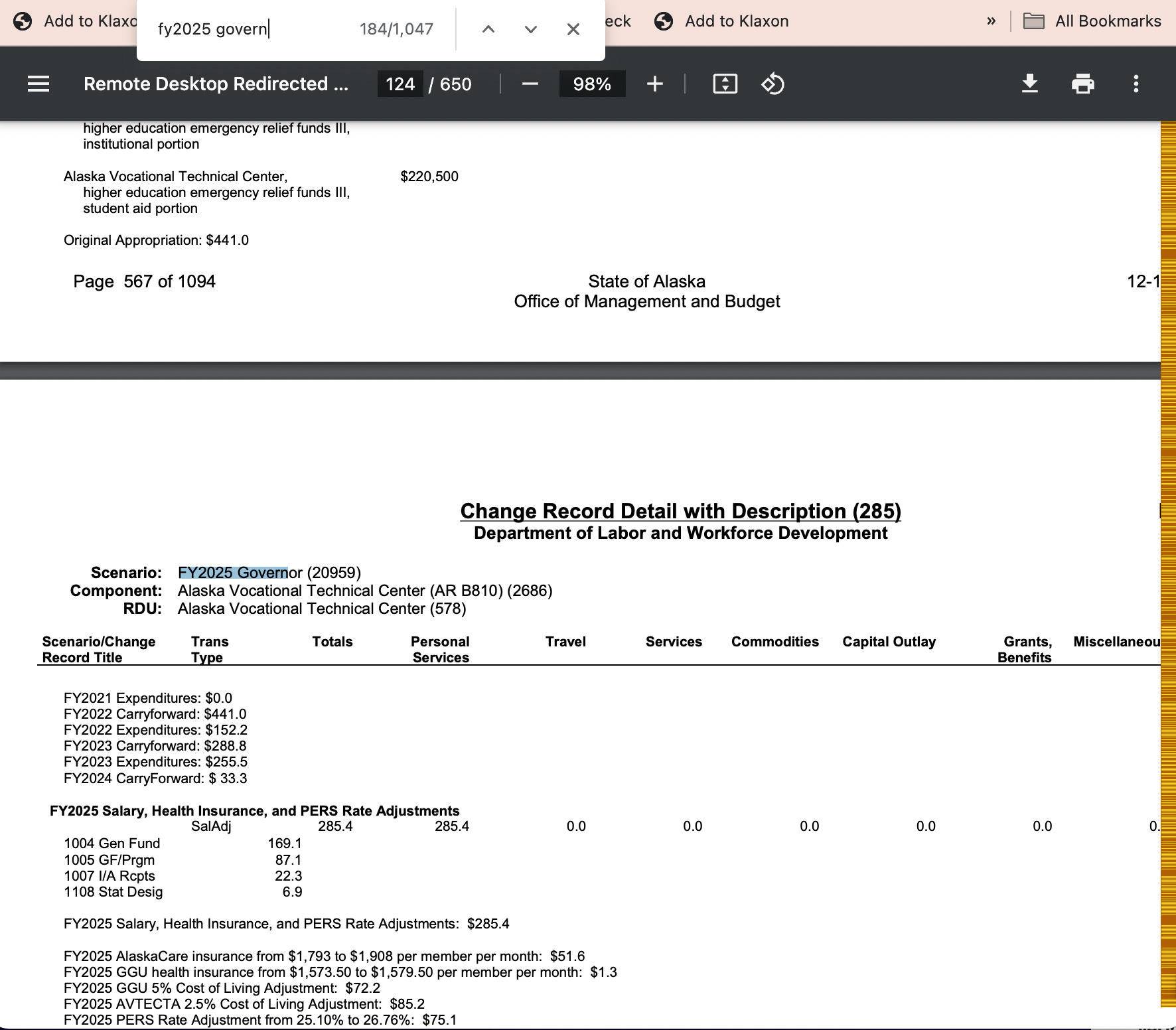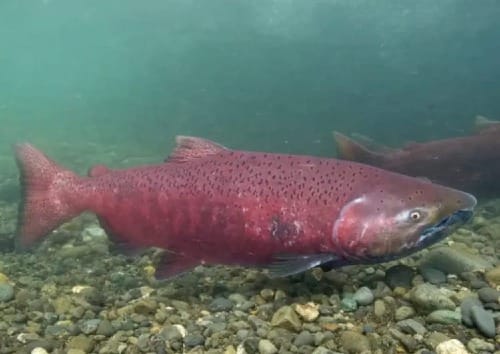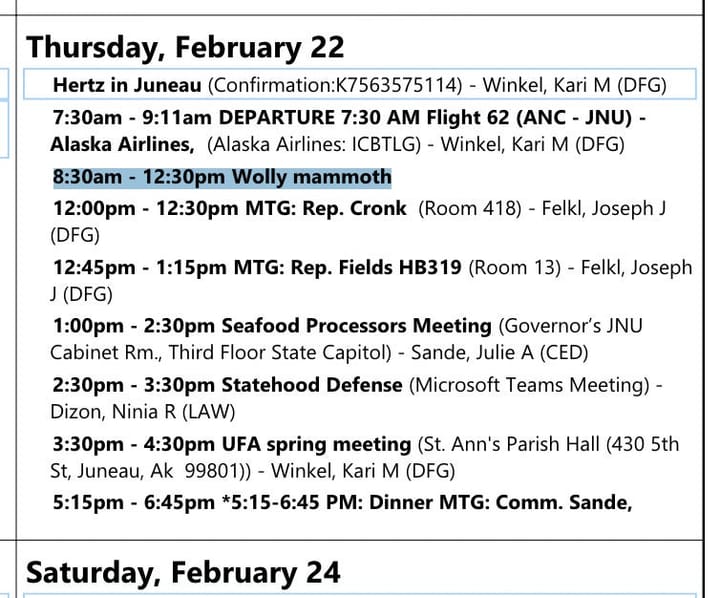I just reviewed 1,000 pages of Alaska budget documents — so you don't have to.
Buried in GOP Gov. Mike Dunleavy's new budget plan are items to escalate the state's subsistence fight with the feds, enhance drone use for law enforcement and pay for a growing number of autopsies.

Northern Journal is a newsletter written by me, Anchorage journalist Nat Herz. It’s free to subscribe, and stories are also free to Alaska news outlets to republish through a partnership with the Alaska Beacon.
My goal is reaching the broadest possible audience of Alaskans. But if you can afford it, please consider supporting my work with a $100 annual or $10 monthly voluntary paid membership — these are currently my only sources of revenue for this project. Your support allows me to stay independent and untethered to the demands of the day-to-day news cycle. If you’ve already subscribed, thank you.
For a reporter who follows the workings of state government in obsessive detail — yes, that’s me — the day of the Alaska governor’s budget announcement is a little like Christmas. Or maybe Easter, since you don’t get to hunt for eggs on Christmas.
The top-line stuff is always interesting: How big will the proposed Permanent Fund dividend be? What about education?
But the truly fun part about Budget Day is the detail — the stuff that you only find once you drill down into the hundreds of pages of documents posted online, just before the governor’s ceremonial news conference. Without fail, those documents, if you’re willing to sift through them, inevitably contain small but revealing items, details and proposals that, in some ways, tell you more about the governor’s priorities than the big stuff.
I just finished my first breeze through 1,094 pages of what are known as “change record details” — the administration documents that show you exactly how Republican Gov. Mike Dunleavy proposes to change state government’s operations in the upcoming fiscal year. I pulled out some 30 interesting points that otherwise might escape public notice, at least immediately.

They include new positions to expand the state’s fight with the federal government over subsistence policy; additions to Dunleavy’s personal security detail; and a pilot program that aims to cut state spending on some of its most vulnerable institutionalized residents.
I’ll be back in the next few days with a similar review of the proposed capital budget. Notice something interesting that I missed? Send me a note.
• The Department of Fish and Game is asking for $300,000 to hire two new specialists to monitor and oppose actions by a federal management agency called the Federal Subsistence Board. This proposal ties into a broader, escalating fight between the state and the Biden administration over fish and wildlife management — a dispute that’s seen lawsuits filed by both sides. The fight hinges on a provision in federal law — and that’s not in state law — that gives a preference to rural Alaska resident harvests when resources are scarce. The subsistence board, the department says in its budget documents, is considering an increasing number of requests that would “unnecessarily close areas of the state to all but Alaskans living in rural areas.” To address the rising workload that comes from state review of those requests, the Department of Fish and Game is asking for two new positions “that would be dedicated 100% to this work.”
• Alaska Resource Education, an oil- and mining-funded nonprofit, would get a $1 million grant from the education department over two years under the administration’s proposed budget. The money, according to budget documents, would help the group incorporate “new technologies like carbon capture and micro-nuclear energy” into its curriculum, which can be distributed to teachers and students across the state.
• The Department of Education is asking for $1 million in new funding for a competitive grant program that school districts could apply for, for hunter education, gun safety and archery programs.
• The Office of Children’s Services, or OCS, wants $1 million to defend itself against a class-action lawsuit filed by public interest groups and attorneys that argues the state’s foster care system isn’t meeting its legal obligations. In budget documents, the agency says that settlements like the one sought by the plaintiffs can cost $15 million or more; the administration says its $1 million request would allow it to hire legal counsel, secure expert witness testimony “and initiate a public relations campaign.” OCS is also asking for a $5 million increase to the foster care base rate, which would boost that overall line item to $28 million — an increase of some 22%.
• The Department of Family and Community Services is asking for $750,000 to launch a pilot program aimed at moving “vulnerable Alaskans” currently under the agency’s care to a “lower level of support,” according to budget documents. As an example, the agency says, patients could be moved from the Alaska Psychiatric Institute, where daily per-patient costs are $2,500, to a “small group home” setting, where costs can fall below $1,200. Providers will receive money, training and support so that they can move “complex patients” to a “less restrictive, community-based setting,” the documents say.
• The Department of Administration is asking for $650,000 to pay recruitment and retention incentives for staff at the payroll division, which has suffered from a high vacancy rate that union leaders say threatens to cause delays in state workers being paid.
• The Department of Commerce is asking for $1.1 million for the Alaska Broadband Office to expedite broadband projects — specifically, by funding permitting and land management jobs at other agencies like the departments of natural resources, transportation and fish and game.
• The Division of Insurance is asking for $100,000 for a one-time public relations effort that opposes a campaign to stop insurers from issuing policies that cover oil and other resource development in the Arctic. In some cases, conservation groups have successfully lobbied major insurers to decline coverage of Arctic oil development, and these efforts “could leave many Alaskan businesses and employees without coverage,” the division says in its budget documents.
• The Department of Corrections is asking for $10 million to pay increasing costs of the contracts for pretrial services — things like electronic monitoring of defendants out on bail — and halfway houses. The administration says that inflation, increasing use of the programs and renegotiated contracts are fueling the request. It’s also asking for $3.75 million to pay for increasing inmate health care costs.
• Dunleavy is resurrecting a $300,000 proposal to add two agents to his security detail that was rejected by lawmakers last year. He’s also asking for a $350,000 boost to cover inflation and security enhancements in his Anchorage office.
• The Division of Elections is asking for $120,000 to hire a full-time public relations manager.
• The Department of Health is asking for a one-time, $1.5 million boost for grants to Alaska food banks and pantries, which it says are struggling with “soaring” inflation and a “high volume of requests.”
• The 15-year-old Senior Benefits Program at the Department of Health, which makes monthly cash payments of up to $250 to elderly Alaskans with low to moderate income, will expire at the end of June without legislative reauthorization. And the Dunleavy administration has, for now, removed the $21 million from next year’s budget. Expect to see a bill proposed to maintain the program in the upcoming legislative session.
• The Department of Health is asking to move $250,000 from its nursing line item to the state medical examiner to cover sharply increasing costs of autopsies and the shipping of human remains. In the past four years, the number of deaths reported to the medical examiner has gone up by an average of 7%, driven in part by a 21% increase in overdose deaths, according to the department’s budget documents. “The opioid epidemic has not spared the state of Alaska,” the documents said.
• The Department of Law is asking for $500,000 to pay 23 legal interns at its criminal division. In budget documents, the department says the pool of applicants for its internships has been dwindling, and the money would help the agency “remain competitive and protect, if not grow, a valuable pipeline for new prosecutors.” The department would recruit mainly from seven law schools that have educated many current prosecutors, and it’s reached out to the state university system to secure potential dorm housing, the budget documents say. Another $500,000 would pay interns in the department’s civil division.
• The law department is also asking for $500,000 to hire a new attorney, paralegal and law office assistant to help with “investigative grand jury proceedings,” according to budget documents. The department says there’s been an increase in requests for such proceedings, requiring up to 500 hours of preparation for each one.
• The law department is asking for $2 million more, spread over three years, to support the administration’s ongoing “statehood defense” initiative.
• The Department of Natural Resources is asking for $175,000 for an extra position to support the administration’s newly created carbon offset program. The employee would support Trevor Fulton, a former legislative aide who the department has already hired as the program’s manager.
• The natural resources department says in budget documents that it needs $900,000 to help pay the salaries of nine state forester and support positions, in order to “decrease its reliance on timber sale receipts.” It’s also asking for $84,000 to cover maintenance of forestry-related heavy equipment that could help build new logging roads and maintain 400 miles of existing roads, which the documents say could lead to “tree-planting projects, carbon offset projects and timber harvest projects.”
• The natural resources department is asking for $1.8 million for what it calls “mission critical incentive pay” for wildland firefighters. In budget documents, the department says nearly half of the state’s firefighter positions are currently vacant, and pay is, on average, 46% less than identical jobs at other state and federal agencies.
• The Department of Public Safety is asking for $250,000 to hire and support a new full-time recruitment manager for the Alaska State Troopers. The agency, in budget documents, says it has nearly 70 vacant trooper positions, and would use some of the money to pay for an estimated 75 off-road system applicants to travel to Anchorage for final testing each year, as those travel costs currently are shouldered by applicants and present a “barrier” for some.
• The troopers are asking for $400,000 to hire two new pilots, one each in Fairbanks and Nome, “to improve trooper response times,” the public safety department says in budget documents. The troopers are also requesting $150,000 to hire a full-time planner for their drone operations.
• The Department of Public Safety is asking for $3.5 million to boost salaries for village public safety officers, and to add 10 new ones to an existing force of 75. The proposed pay bump would raise starting salaries by 7.4%, to $36.29 an hour.
• The Alaska Police Standards Council, which oversees law enforcement officers, says it needs $160,000 to keep up with an increasing number of complaints and requests for investigations that it says is driven partially by increased use of body worn cameras. In 1996, only four cases were brought to the council for the investigation, it says in budget documents; that number rose to five in 2011 and 32 in 2022.
• The public safety department is asking for $250,000 for a new advertising campaign related to missing and murdered Indigenous people. The idea comes from a working group created by Dunleavy that suggested educating Alaskans “that they do not need to wait for 24 hours to report a missing person,” the department says in budget documents. “The department is proposing a statewide advertising campaign to educate all Alaskans about the importance of reporting missing people to 911 immediately, by enlisting the expertise of an advertising agency to create and distribute these advertisements,” it says.
• The public safety department is also asking for $140,000 for a new position to process an expected increase in public records requests amid the growing use of body worn cameras. And it’s requesting $67,000 to create a public portal for crime data.
• The Tax Division says it’s “not meeting the requirements for property tax and oil and gas production tax site visits and inspection” after budget cuts curtailed its work between 2016 and 2020. It’s now asking for a $100,000 budget boost to address the problem, which would pay mostly for travel for site inspections, which the division says in budget documents are “fundamental to the appraisal process.”
• The Department of Transportation is asking for $900,000 for new contracts for statewide snow removal for “as-needed” work on sidewalks and other transportation corridors. It also wants $3.5 million to cover rising commodity costs.
• The state university system is asking for a $13 million boost to cover increasing insurance, maintenance and utility costs; operations costs of a new science building in Juneau; and cybersecurity upgrades.
• The university system is also proposing a $200,000 increase to help pay for the ongoing operations of three separate working groups — on hudrogen, energy education, and carbon capture — at the Alaska Center for Energy and Power.
Northern Journal is a reader-supported publication. To receive new posts and support my work, consider becoming a free or paid subscriber.



